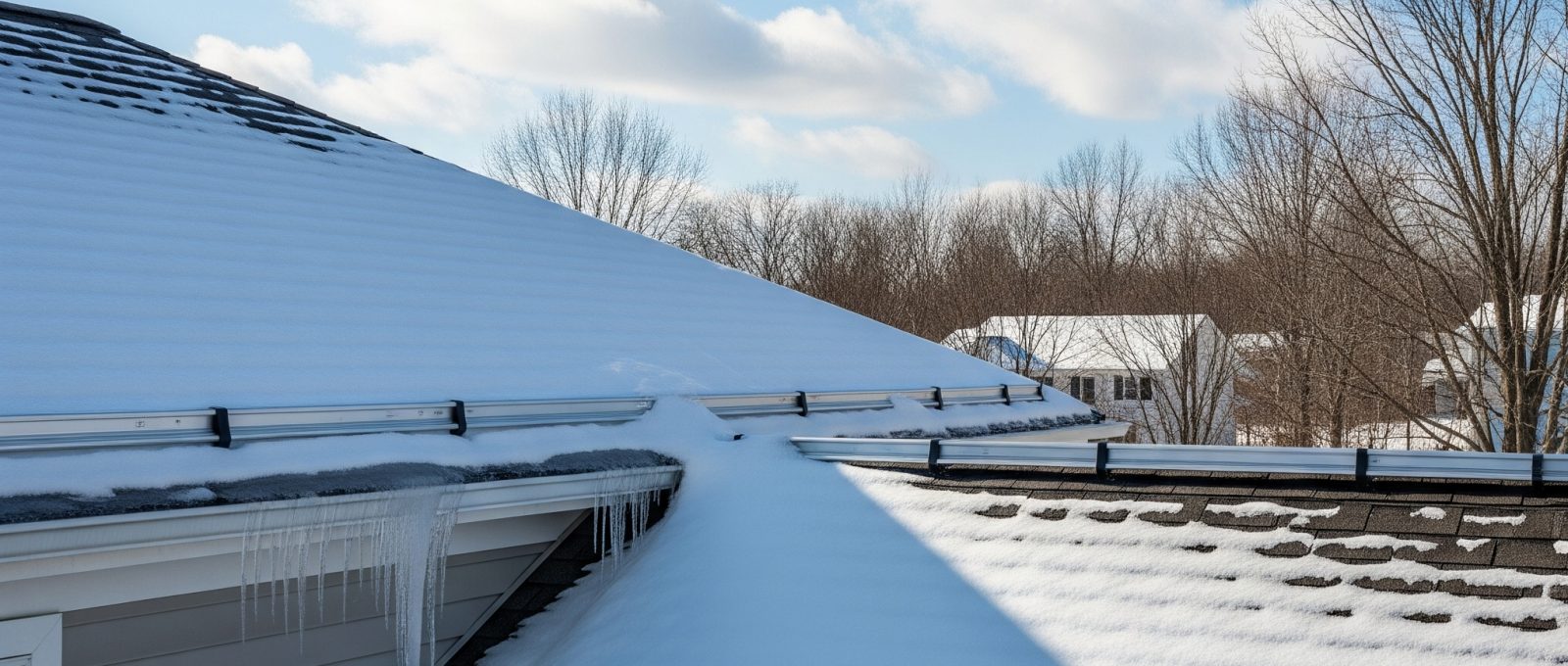New Jersey winters can be harsh—with freezing temperatures, heavy snow, ice storms, and high winds that can all take a toll on your roof. If you’re a homeowner in the Garden State, preparing your roof for winter is essential to protect your investment and avoid costly damage.
At All Pro 1 New Jersey, we’ve helped hundreds of homeowners get their roofs ready for winter—and avoid emergency repairs. In this guide, we’ll walk you through how to winterize your roof step-by-step, so your home stays warm, dry, and safe all season long.
📞 Call (201) 773-6635 or book your free winter roof inspection with our experts today.
Why Winterizing Your Roof Matters in New Jersey
New Jersey weather is unpredictable. A mild December can quickly turn into a blizzard-filled January. Ice dams, snow accumulation, and poor attic ventilation are common causes of roof damage in this region.
Without proper winter prep, you risk:
-
Leaks and interior water damage
-
Roof collapse under snow loads
-
Mold and mildew in the attic
-
Skyrocketing heating bills due to poor insulation
Winterizing your roof is the key to avoiding all that.
Step-by-Step Roof Winterization Checklist
1. Schedule a Professional Roof Inspection
Before winter hits, have your roof thoroughly inspected by a licensed professional. At All Pro 1 New Jersey, we check for:
-
Missing or damaged shingles
-
Soft spots or sagging areas
-
Flashing damage around chimneys, vents, and skylights
-
Signs of water penetration or previous leaks
A pre-winter inspection can reveal hidden issues that might turn into major problems under snow and ice.
📞 Call (201) 773-6635 to schedule your free inspection.
2. Clean Your Gutters and Downspouts
Clogged gutters can cause ice dams, where water backs up and freezes under shingles, leading to roof rot and interior leaks.
-
Remove all leaves, twigs, and debris from gutters
-
Check that downspouts drain properly at least 3 feet from your foundation
-
Consider installing gutter guards if you live near trees
Tip: Clean your gutters in late fall—after most leaves have dropped, but before the first snowfall.
3. Check Your Attic Ventilation and Insulation
Many roof issues in winter stem from poor attic ventilation, which leads to warm air rising, melting snow, and causing refreeze cycles (ice dams).
-
Make sure attic vents are clear and not blocked by insulation
-
Add insulation to reach an R-value of at least R-38 in most NJ zones
-
Ensure there’s a balanced system of intake and exhaust vents
A well-ventilated and insulated attic keeps your roof cold in winter—which is a good thing—because it prevents uneven snow melt and structural damage.
4. Repair or Replace Damaged Shingles
Loose or missing shingles are the first point of failure during high winds or snowstorms.
-
Replace curled, cracked, or missing shingles
-
Seal nail pops and re-secure raised shingles
-
Fix flashing and seal exposed areas
Even a small section of damaged roofing can lead to major water damage after a snowstorm.
5. Trim Back Overhanging Branches
Tree limbs that hang over your roof can break under snow or ice and puncture your shingles.
-
Trim branches at least 6–10 feet away from your roofline
-
Remove dead or weak limbs that could fall during storms
-
Clean debris from valleys and roof edges to prevent clogs
This also helps keep animals like squirrels from nesting in your attic through roof access.
6. Install Heat Cables or Ice Melting Systems (Optional)
If your home is prone to ice dams—especially at eaves or near gutters—consider installing:
-
Heat cables along vulnerable roof edges
-
Roof de-icing systems for safer snowmelt
While these are optional, they’re helpful in homes with complicated rooflines or historic homes with limited ventilation options.
7. Prepare for Snow Removal
Excess snow accumulation (over 12 inches) can stress your roof. Invest in a roof rake or snow removal service to safely clear snow from edges.
Important: Never climb on a snowy or icy roof. Always hire a professional if snow needs to be removed from higher elevations.
Bonus Tip: Check for Leaks After First Snow
Once the first snow melts, inspect your attic for:
-
Water stains on wood or insulation
-
Dripping or moisture near chimneys, vents, or pipes
-
Musty smells that indicate mold growth
If you spot anything, call All Pro 1 New Jersey for immediate leak repair before it worsens.
Trust All Pro 1 New Jersey to Winterize Your Roof
We’re local roofing experts who understand how New Jersey’s winters impact homes from Bergen County to Monmouth County. Our licensed team handles:
-
Winter inspections
-
Leak repairs
-
Gutter services
-
Roof replacements
-
Emergency storm response
📞 Call us at (201) 773-6635
📝 Request your free winterization estimate today

